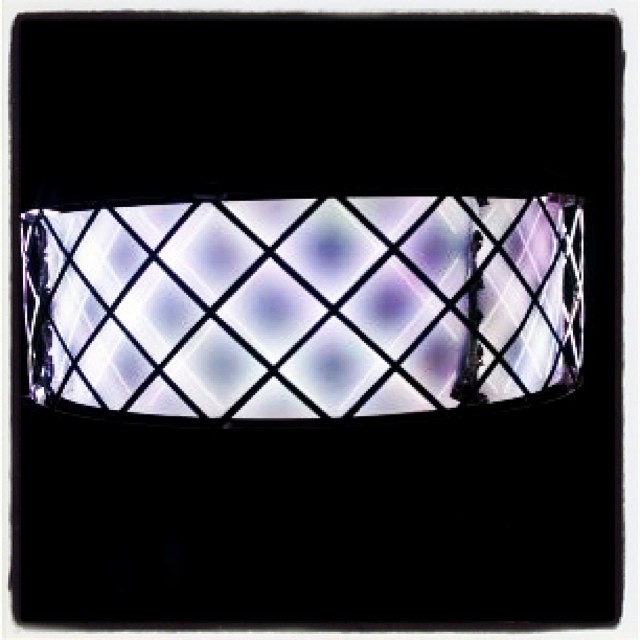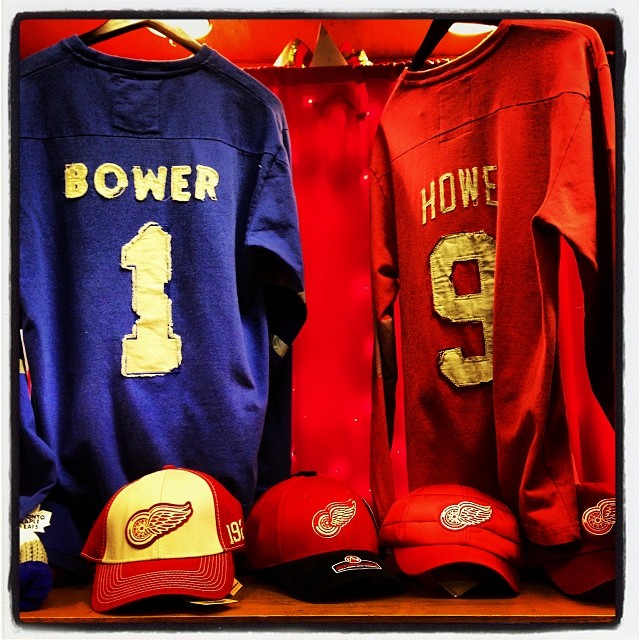2014 NHL Winter Classic: Questions for the NHL
In anticipation of the 2014 Winter Classic being held in Ann Arbor, along with The Puck Drops Here (the New Year’s Eve celebration in Ann Arbor), Benjamin Ludy and I posed a series of questions to the NHL. For the New Year’s Eve The Puck Drops Here event, METAL has designed and fabricated The Puck that will be lowered (we have an aversion to the word “drop” though we understand its hockey based intention) as we all count down to midnight. Throughout the duration of our time working on- and being around The Puck, we found ourselves intrigued by the sport of hockey and its piece of equipment we produced in our own fashion, and came up with some questions.

We thank the NHL and the AAACVB for our access and answering our questions, which enlightened us and provided us with some “insider” information to have while watching The Puck on New Year’s Eve or the puck on New Year’s Day.

1. Aside from Michigan Stadium being one of the largest capacity entertainment venues in the United States, what makes this venue interesting for the NHL and the players of the 2014 Winter Classic?
The answer to our first query comes directly from NHL Commissioner Gary Bettman:
"The history of the teams' cross-border rivalry, the nobility of The Big House and the growing tradition of the NHL Winter Classic will raise the anticipation for this event to new heights. We are delighted to offer our fans a spectacle at which the energy will be unmatched and the demand for tickets will be unprecedented. For anyone involved in any way -- as a player, a coach, an official, a fan -- this NHL Winter Classic will be a truly memorable hockey moment."
2. What equipment is used to help the players and coaches stay warm in their respective benches? Is there any special attention paid to creating the ice and keeping it in regulation order in such a space as the Michigan Stadium?

Constructing an NHL-caliber ice rink outdoors at a facility designed for a sport other than hockey is a unique challenge. Much more than taking a garden hose into your backyard and flooding an area, for the Bridgestone NHL Winter Classic® the National Hockey League uses special equipment, expertise and technology to create an ice rink fit for the best hockey players in the world.
The most important aspects of making outdoor ice for an NHL game are ensuring the conditions meet all of the safety standards required for the players and providing all of the tools necessary for an NHL game. To accommodate its outdoor games, the NHL designed and built a one-of-a-kind mobile refrigeration unit and rink system. The main function of the 53-foot, 300-ton capacity refrigeration unit is to perform the key function of making a great sheet of ice – to remove heat from the surface and stabilize the temperature.
To do this, the unit pumps as much as 3,000 gallons of glycol coolant into custom-made aluminum trays that are configured on the field of the stadium.
Running through a series of hoses from the refrigeration unit to the field, the glycol chills the trays in order to keep the ice near its ideal temperature – 22 degrees Fahrenheit. Following the placement of the ice trays, the rink boards are installed.
Once the boards are up and the ideal surface temperature is attained, the actual process of building the ice begins. In an NHL arena, the ice is built to a thickness of approximately 1-1.25 inches. An outdoor rink, however, requires up to 2 inches of ice thickness to help withstand the more extreme elements. While many speculate that it takes special water to create the ice, the water used is the same tap water provided into everyone’s homes.
Water is added as slowly as possible, in as fine a mist as the process will allow. Workers pass the spray wand over the ice rink hundreds of times, providing a more-even freeze and better-quality playing surface. Each inch of ice thickness requires approximately 10,000 gallons of water. For finishing touches, the ice surface is whitened using approximately 350 gallons of paint. The lines and logos then are painted and placed on the surface, with more ice built on top.
Once constructed, monitoring the status of the ice is a 24-hour job. To help this process, a high-tech system called Eye on the Ice is embedded in the surface. The technology provides updates on temperatures at different areas of the ice, signaling an alert prompting the need to pump more glycol or engage the in-line heating system in case the weather gets too cold.
3. Since METAL has designed and fabricated the New Year's Eve "PUCK" a little inside knowledge, history or factoids, concerning that hurtling piece of hockey equipment would be enjoyed.
Official pucks are made of vulcanized rubber. They are one inch (1'') thick and three inches (3'') in diameter and shall weigh between five and one-half ounces (51/2'' oz.) and six ounces (6 oz.). In the NHL, home teams are responsible for providing official pucks which are kept in a frozen condition by storing them in a freezer until they are used.

- Questions Submitted by Claudette Jocelyn Stern & Benjamin Ludy, M.S. Sport Management
